Affiliate links on Android Authority may earn us a commission. Learn more.
ASUS Zenfone 7 series: Everything you need to know about these flippy phones
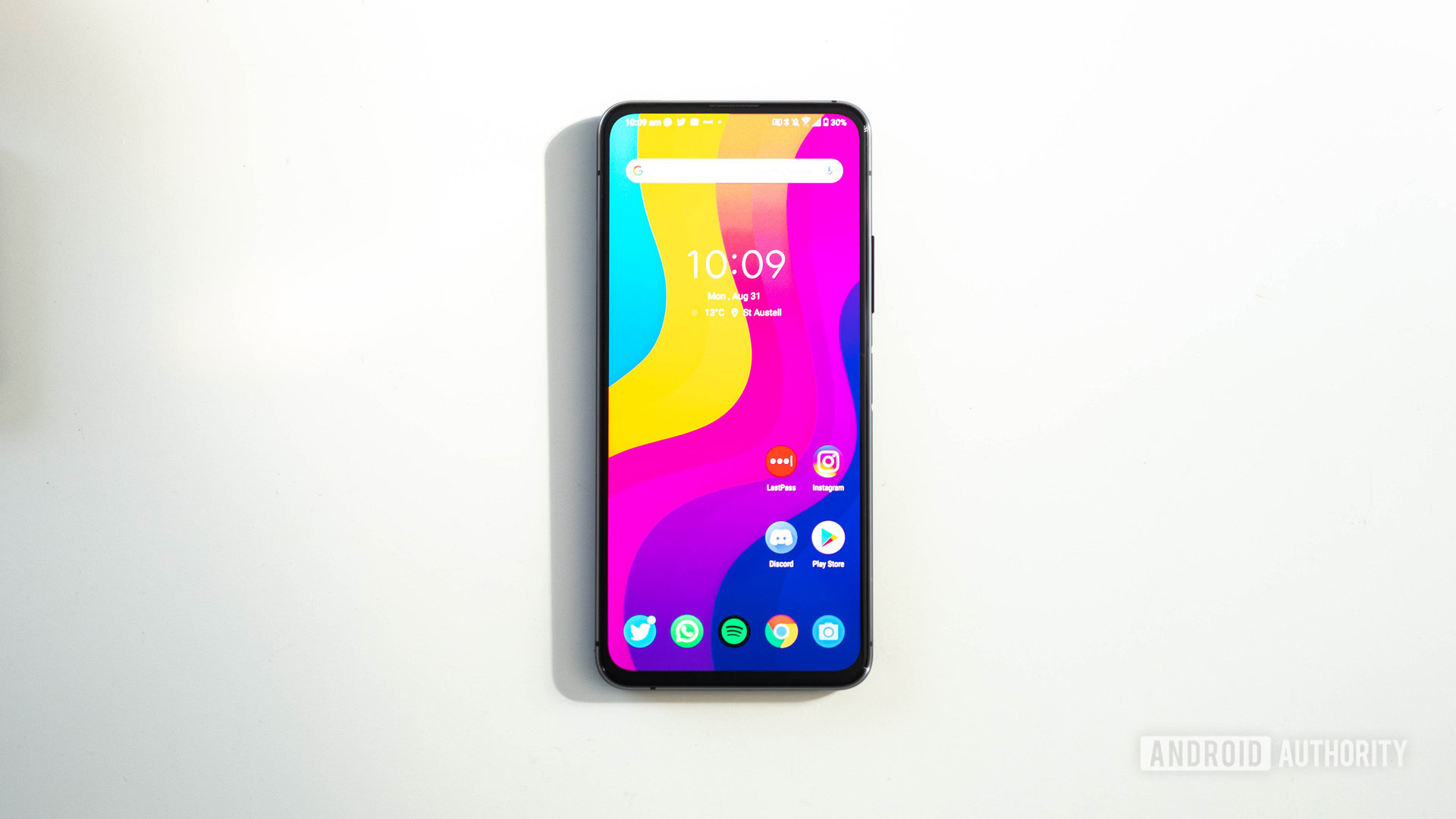
ASUS released its 2020 flagships, the Zenfone 7 series, more than a year after the Zenfone 6 made its debut. Thankfully, the Zenfone 7 lineup, which includes a Pro iteration this time around, offers much of what made the 2019 device so special. So, what kind of improvements should you expect? How do the Zenfone 7 and Zenfone 7 Pro differ? Is the flipping camera mechanism still present? Here’s everything you need to know about the Zenfone 7 series.
ASUS Zenfone 7 and Zenfone 7 Pro: At a glance
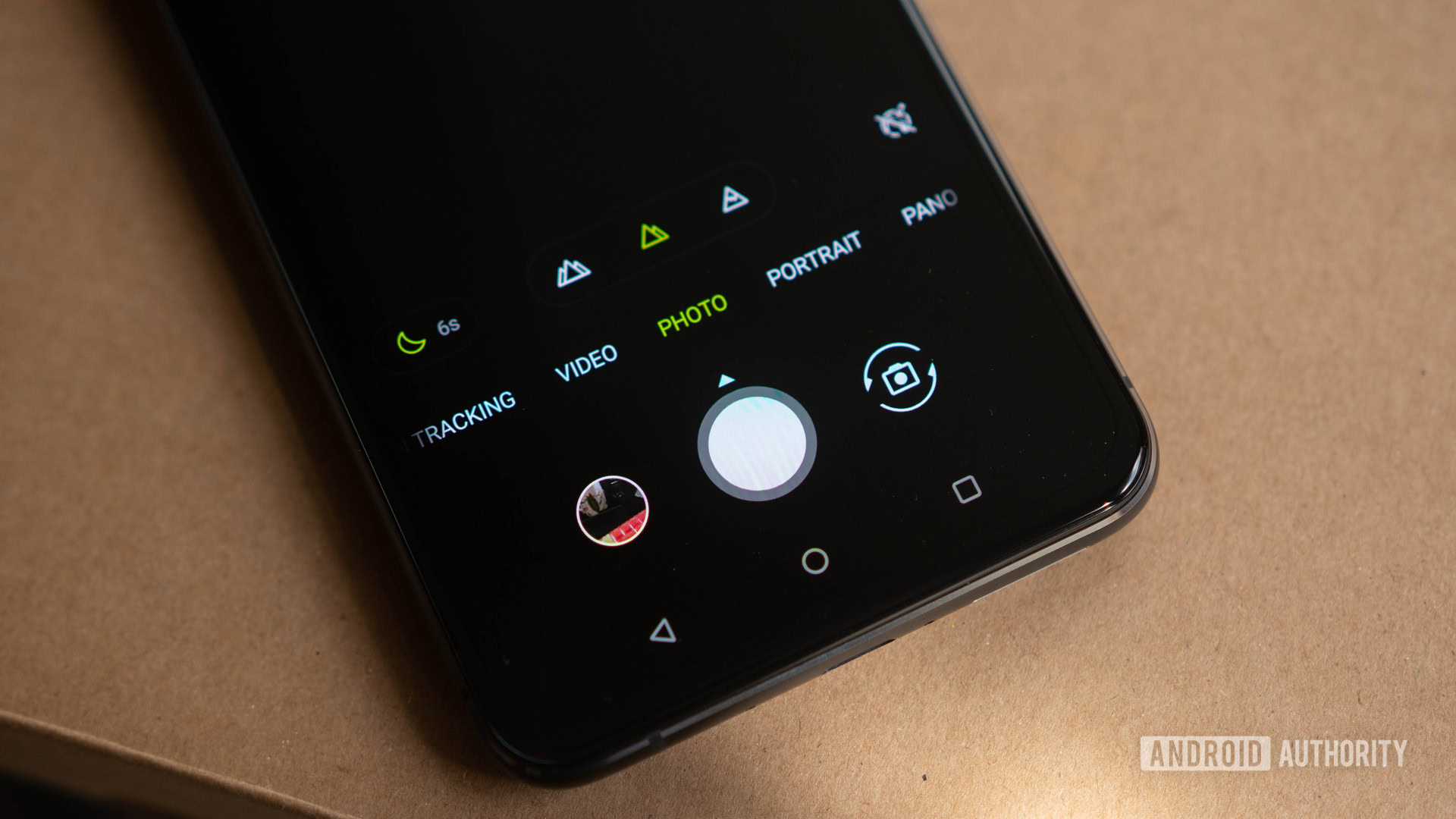
The ASUS Zenfone 7 series offers a lower price than typical flagships these days. While devices like last year’s pricey ROG Phone 3 focus on gaming and flashiness, the Zenfone 7 devices dial features and pricing back a bit.
You’re still getting an impressive spec sheet for the price, however. The two devices feature flagship silicon, 90Hz OLED screens, triple cameras, 5G, and 5,000mAh batteries. The Zenfone 7 packs the Snapdragon 865 processor, while the Pro variant ups the ante a little with the Snapdragon 865 Plus chipset.
Just keep in mind that these aren’t the latest flagship phones from ASUS anymore. The company unveiled the Zenfone 8 and 8 Flip back in May, both of which are worth checking out.
Are the ASUS Zenfone 7 and Zenfone 7 Pro worth buying?
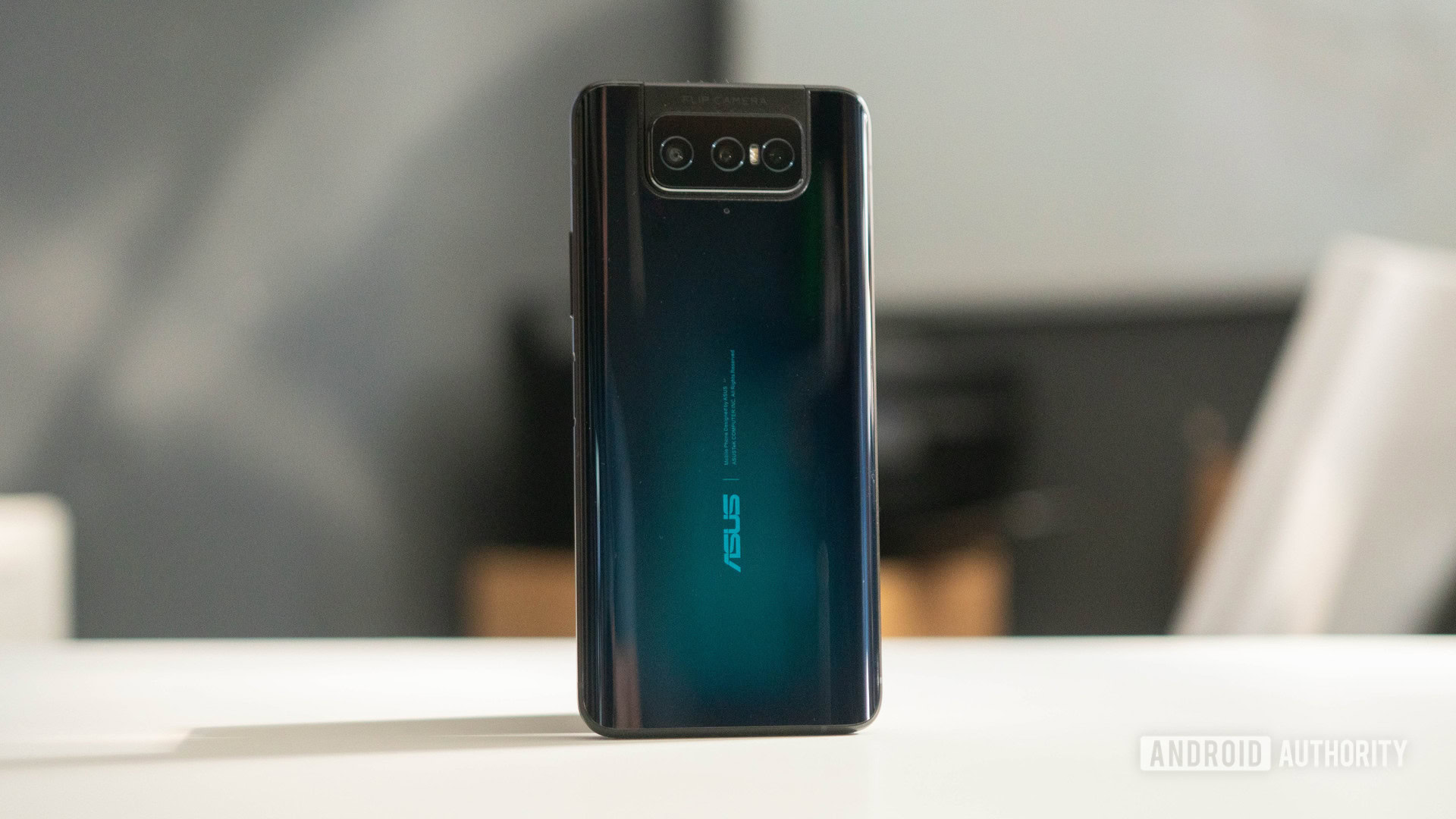
The Zenfone 7 lineup offers everything you’d expect from an affordable flagship. A display with a high refresh rate, fast processors, large batteries, and good cameras. It stands out from the crowd by being one of the few 2020 releases to come with a notch-less (or punch hole-less) design. The unique flipping camera makes a return as well, bringing the full strength of the rear setup to your selfie and vlogging game.
While everything is great on paper, the Zenfone 7 series faces stiff competition and falls short in a few key areas. Ultimately, the Zenfone 7 series proves to be for a very niche set of users. It excels in performance, battery life, and video recording. This makes it a solid choice for those who want exactly what the Zenfone 7 Pro is — a vlogging smartphone. There’s plenty of storage with microSD expansion. You can use all three cameras as front-facing shooters. The 5,000mAh battery will also let you film your day without needing to top up.
Very few people actually buy phones for vlogging, though. So, unless you are desperate for the flip camera and the huge battery, you might be better served by a competing device.
What the experts say about the ASUS Zenfone 7 series
Android Authority’s own Ryan Thomas-Shaw was left with mixed feelings after reviewing the ASUS Zenfone 7 Pro. The phone has a lot going for it when it’s pit against the competition. The Pro iteration comes with the Snapdragon 865 Plus processor. The phones also have big batteries and a unique design. Unfortunately, Ryan didn’t find these factors enough to recommend the device over similarly-priced alternatives.
Ryan says that the Zenfone 7 Pro doesn’t have the most compelling feature set at this price. It lacks wireless charging and water resistance. There are issues with image processing as well. Moreover, despite how heavy the phone is, it doesn’t feel as well-built as its heft would suggest. He concludes by saying that the Zenfone 7 Pro makes for an excellent vlogging smartphone if that’s what you need. For anything else, the competition might be more enticing.
What other reviewers from around the web are saying
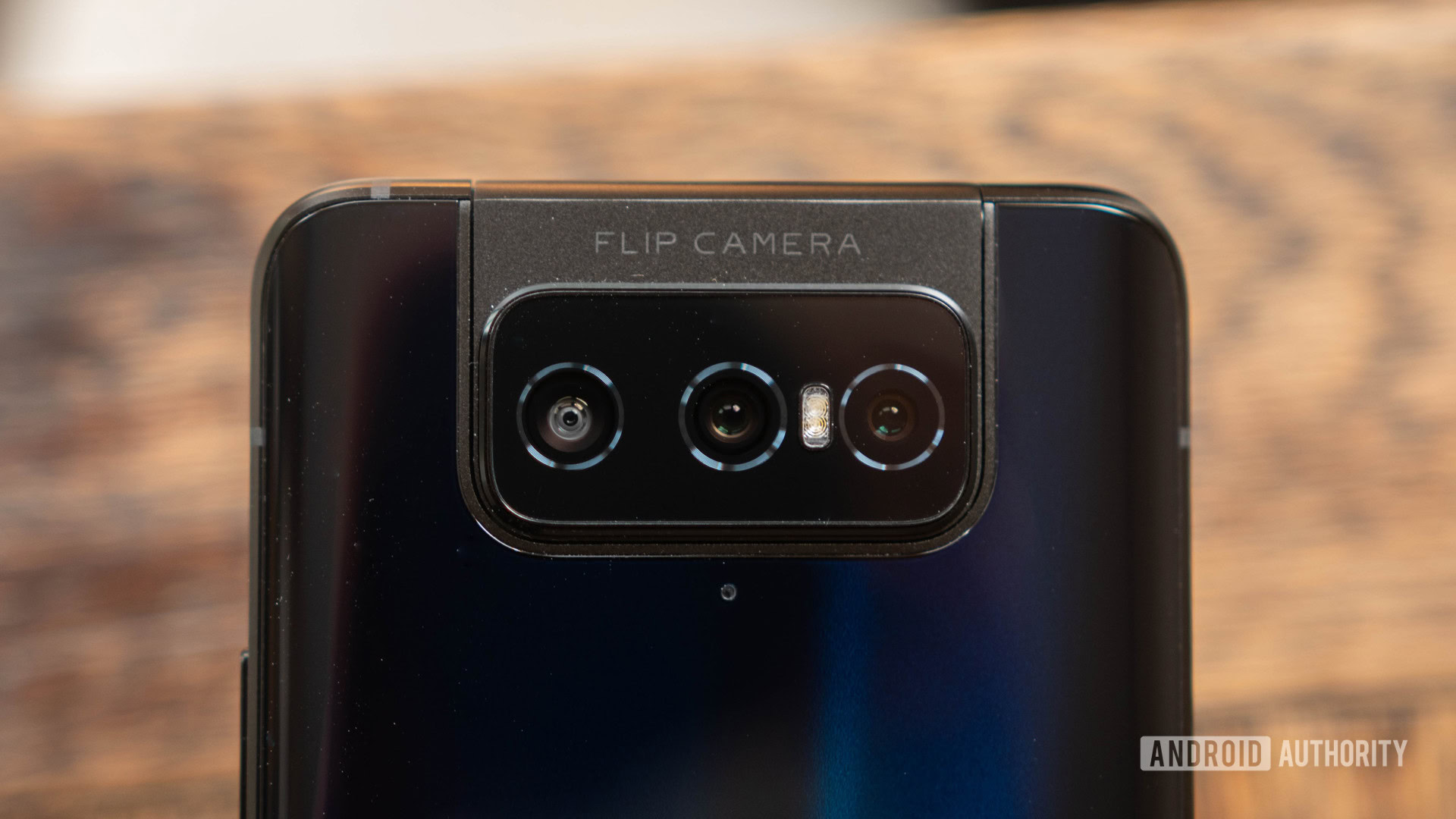
- TechRadar’s David Lumb says that the ASUS Zenfone 7 Pro is an impressive but pretty standard 2020 flagship. He finds the phone heavy and uncomfortable to hold, but the battery life is impressive. The flip camera allows for some good-looking selfies as well. Ultimately, he finds the Zenfone 7 Pro to be more expensive than it should have been and says that the regular Zenfone 7 offers far more value for money.
- The Verge’s Jon Porter says that the Zenfone 7 Pro gets a lot right. The performance is snappy, and the battery life is excellent. He adds that while the flip cameras remain the “most eye-catching part of the phone,” the camera itself has image processing issues. “The Zenfone 7 Pro is a phone for people who want cameras that flip, not people who want the best cameras in the first place,” he says.
- XDA-Developer’s Mishaal Rahman appreciates the notch-less display and the impressive features with this version of the flip camera. ZenUI is one of his favorite software experiences, and it has gotten even better with the ZenUI 7 on the Zenfone 7 Pro. It’s admittedly heavy and unwieldy, but the entire package put together makes the ASUS Zenfone 7 Pro his “new favorite phone of 2020.”
ASUS Zenfone 7 series specs
| ASUS Zenfone 7 | ASUS Zenfone 7 Pro | |
|---|---|---|
Display | ASUS Zenfone 7 6.67-inch AMOLED FHD+ HDR10+ 90Hz refresh rate Corning Gorilla Glass 6 | ASUS Zenfone 7 Pro 6.67-inch AMOLED FHD+ HDR10+ 90Hz refresh rate Corning Gorilla Glass 6 |
Processor | ASUS Zenfone 7 Qualcomm Snapdragon 865 | ASUS Zenfone 7 Pro Qualcomm Snapdragon 865 Plus |
GPU | ASUS Zenfone 7 Qualcomm Adreno 650 | ASUS Zenfone 7 Pro Qualcomm Adreno 650 |
RAM | ASUS Zenfone 7 6GB / 8GB LPDDR5 | ASUS Zenfone 7 Pro 8GB LPDDR5 |
Storage | ASUS Zenfone 7 128GB UFS 3.1 Expandable with microSD card (up to 2TB) | ASUS Zenfone 7 Pro 256GB UFS 3.1 Expandable with microSD card (up to 2TB) |
Battery | ASUS Zenfone 7 5,000mAh battery 30W wired charging | ASUS Zenfone 7 Pro 5,000mAh battery 30W wired charging |
Cameras | ASUS Zenfone 7 Primary: 64MP Sony IMX686 sensor with EIS f/1.8 aperture 0.8μm pixels Dual LED flash 8K/30fps video Secondary: 12MP ultra-wide sensor (IMX363) Tertiary: 8MP 3x telephoto with EIS | ASUS Zenfone 7 Pro Primary: 64MP Sony IMX686 sensor with OIS f/1.8 aperture 0.8μm pixels Dual LED flash 8K/30fps video Secondary: 12MP ultra-wide sensor (IMX363) Tertiary: 8MP 3x telephoto with OIS |
Connectivity | ASUS Zenfone 7 Wi-Fi 6 Bluetooth 5.1 NFC | ASUS Zenfone 7 Pro Wi-Fi 6 Bluetooth 5.1 NFC |
SIM | ASUS Zenfone 7 Dual nano-SIM MicroSD card (up to 2TB) | ASUS Zenfone 7 Pro Dual nano-SIM MicroSD card (up to 2TB) |
Operating System | ASUS Zenfone 7 Android 10 | ASUS Zenfone 7 Pro Android 10 |
Audio | ASUS Zenfone 7 Stereo speakers No 3.5mm port | ASUS Zenfone 7 Pro Stereo speakers No 3.5mm port |
Dimensions | ASUS Zenfone 7 165.08 x 77.28 x 9.6mm 230g | ASUS Zenfone 7 Pro 165.08 x 77.28 x 9.6mm 230g |
Colors | ASUS Zenfone 7 Aurora Black Pastel White | ASUS Zenfone 7 Pro Aurora Black Pastel White |
ASUS Zenfone 7 series: The flippy camera explained
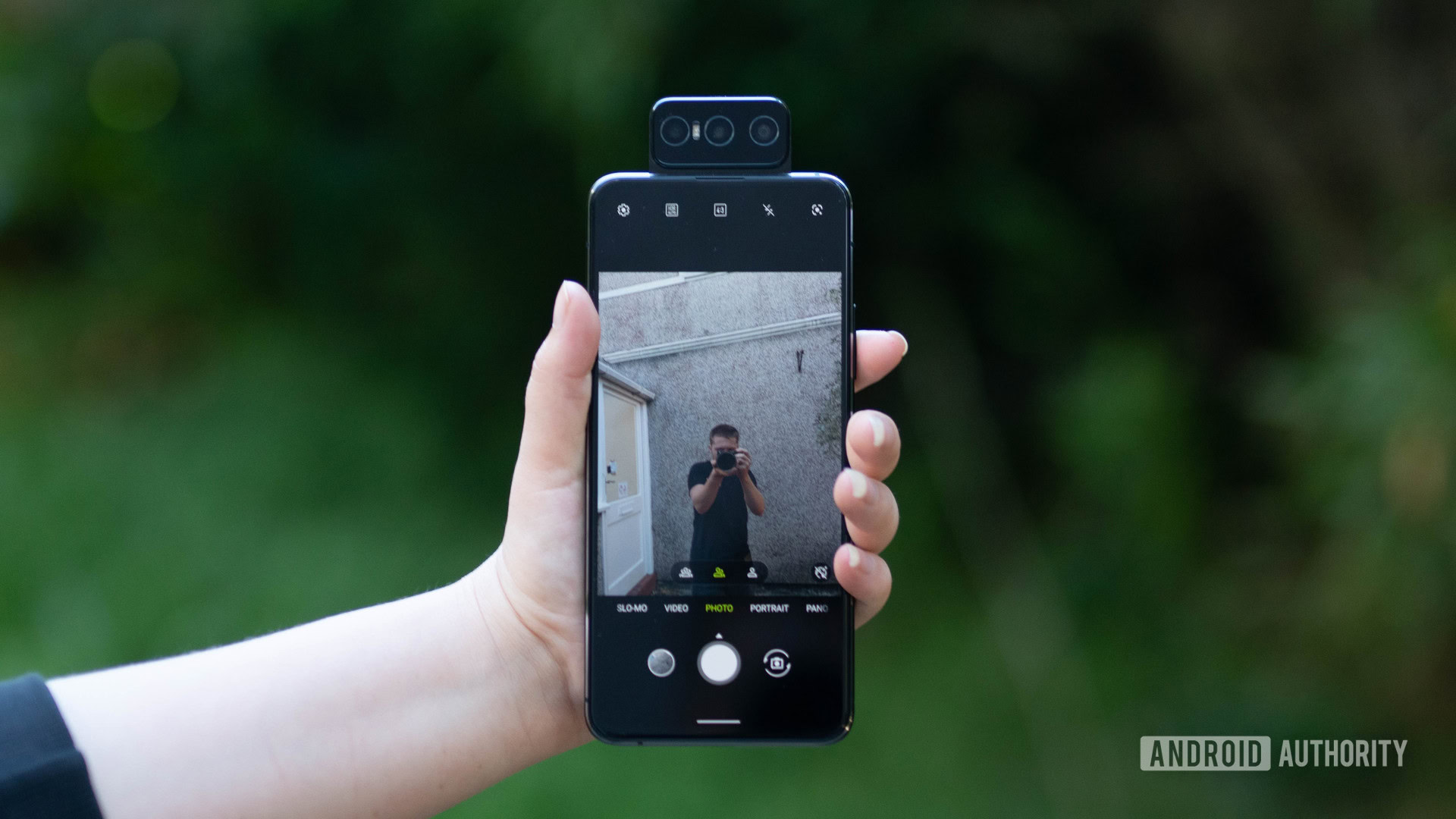
Arguably the coolest feature on the Zenfone 6 was the flip camera mechanism, as the rear camera housing flips over to handle selfies. This mechanism is back in action on the Zenfone 7 series and is even better than before.
Both devices in the Zenfone 7 series come with a 64MP IMX686 main shooter, a 12MP ultra-wide camera, and an 8MP 3x telephoto sensor. However, the regular Zenfone 7 doesn’t come with OIS. The phones also pack some impressive video tech such as 8K/30fps video recording, 4K/120fps slow-mo, three microphones, audio zoom, and wind filter functionality.
In his review, Ryan found that the Zenfone 7 Pro takes vibrant and bright photos with lots of contrast, but the experience varied across all three cameras. You can see that the telephoto camera drops exposure, color, contrast, and dynamic range in the shots below. On the other hand, the ultra-wide shooter tends to exaggerate colors instead of flattening them.
The Zenfone 7 shines when it comes to video recording, though. Given its flippy nature, this makes it great for vlogging. It can shoot in many modes, including 8K 30fps and 4K 120fps. Because the cameras flip around, you can vlog in these modes too. Ryan found the colors to be a little over-saturated, while HDR performed really well.
How is the ASUS Zenfone 7’s battery life?
The Zenfone 7 and 7 Pro come with massive 5,000mAh batteries, which is great news for anyone who plans to use the cameras a lot. In his review, the Zenfone 7 Pro comfortably lasted Ryan for two days for the most part. Even with heavy usage, which involved recording videos, it lasted a full day.
Unfortunately, there’s no wireless charging. The phones come with fast 30W charging though, letting you fully top up the huge battery in around 90 minutes. It’s not the fastest charging we’ve seen, but these aren’t phones you’ll need to plug in too often.
ASUS Zenfone 7 series: Performance and software
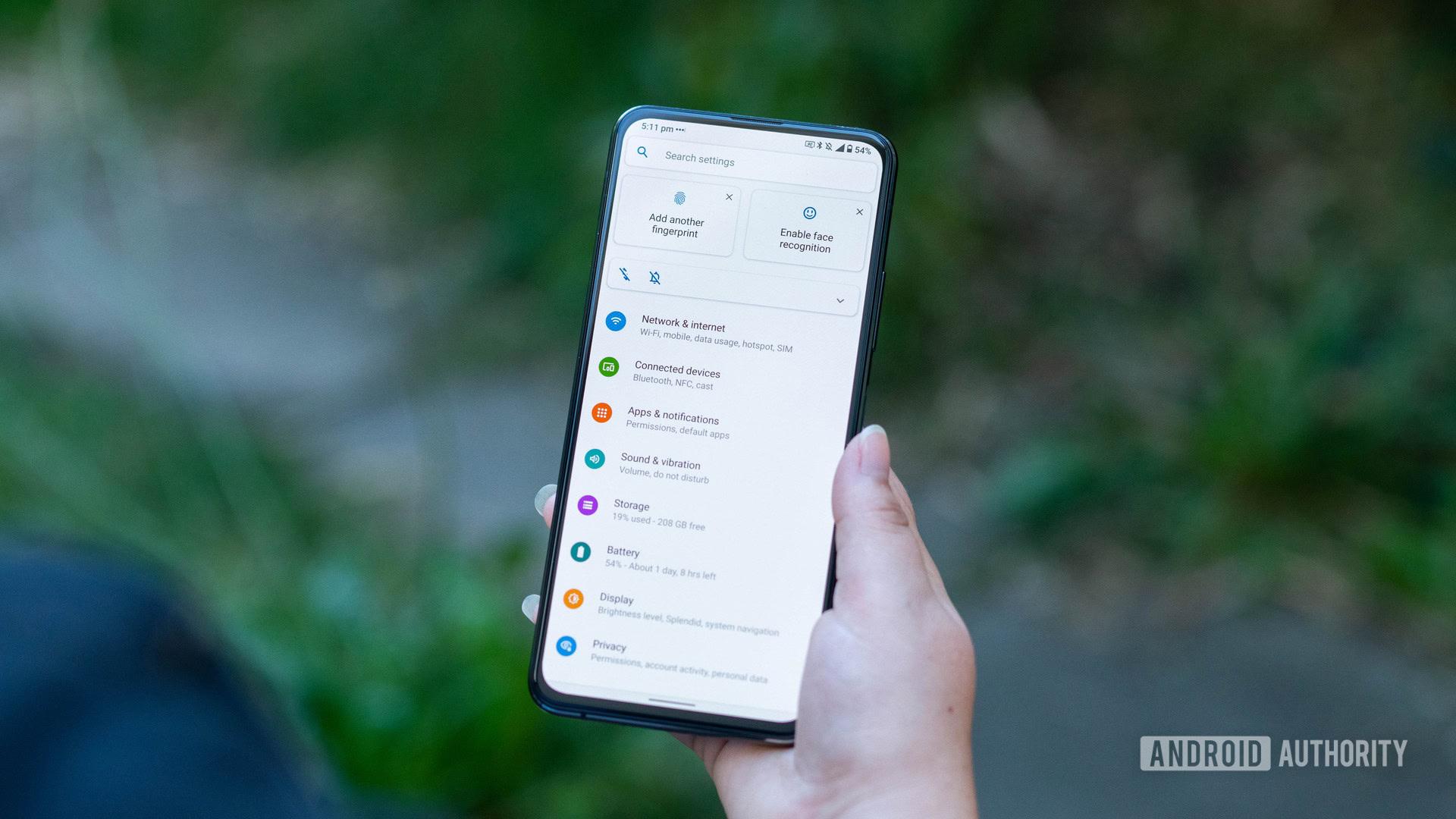
ASUS decided to pack the Snapdragon 865 Plus into its Zenfone 7 Pro, while the vanilla model gets the Snapdragon 865. This also defines the phones the Zenfone 7 series is taking on. While the Zenfone 7 Pro targets 2020’s premium flagships, the Zenfone 7 is aimed squarely at the emerging affordable high-ender.
The Zenfone 7 Pro has 8GB RAM and 256GB storage, while the regular iteration comes with 6GB or 8GB options and 128GB of storage. Overall, you get snappy performance with either phone, but the Zenfone 7 Pro undoubtedly impresses. In his review, Ryan found that the Zenfone 7 Pro could handle everything, from scrolling through social media to playing intensive games, with ease.
Helping with speedy performance is ASUS’ ZenUI 7. Based on Android 10, this take on the OS comes quite close to stock, but with a few useful tools and settings to enhance the experience. This includes smart key customization features that let you program the power button to perform different tasks with long and double presses.
You also get Game Genie from the ROG Phone. It’s a handy, quick-access gaming toolkit that pauses notifications, locks the screen refresh rate, and adjusts the brightness. You can also use it to start a live stream and record gameplay.
What are the differences between the Zenfone 7 and the Zenfone 7 Pro
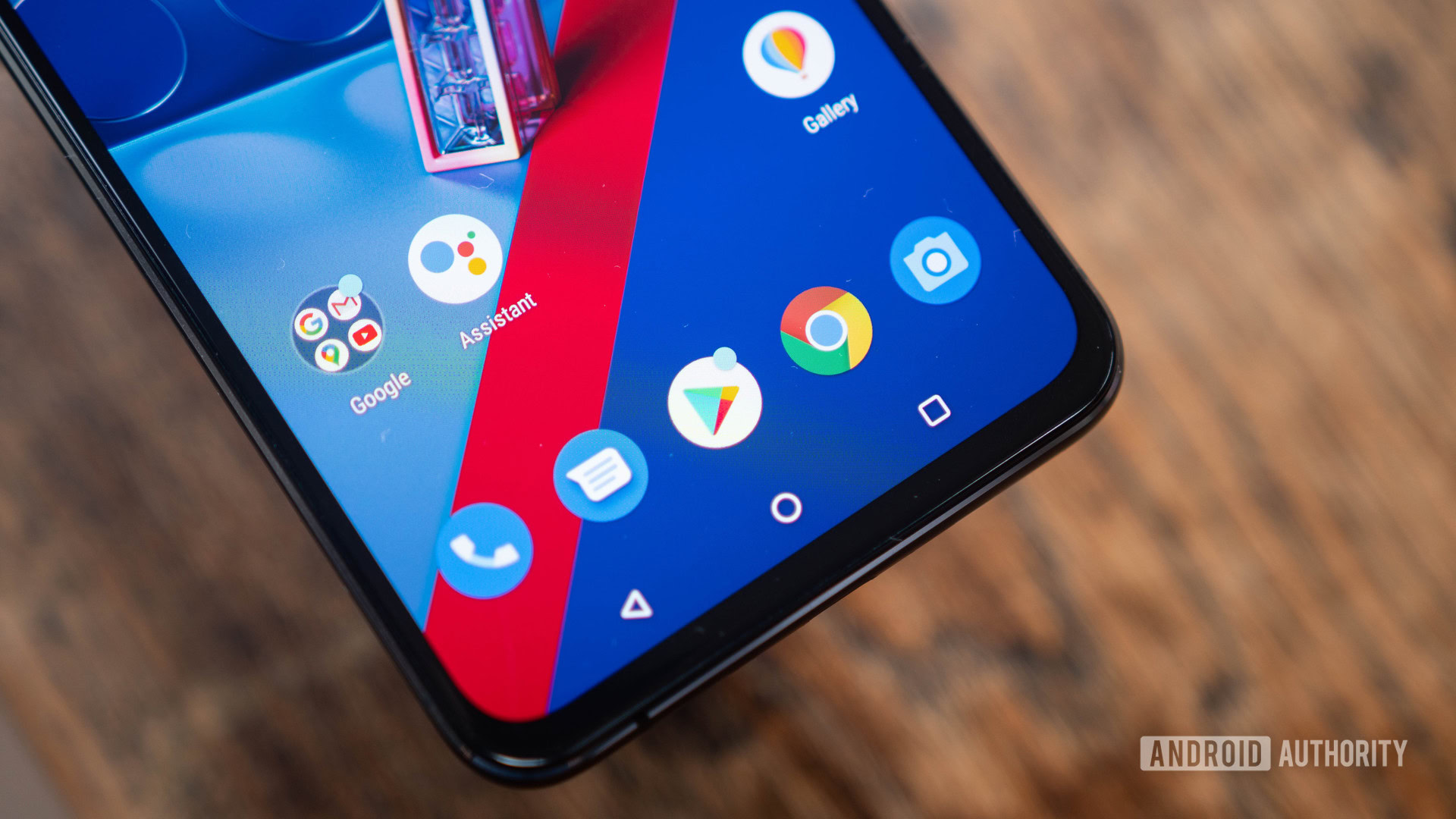
The Zenfone 7 and the Zenfone 7 Pro are identical on the surface. You get the same display, design language, and build quality with both phones. The great news is that its biggest selling point, the cameras, remains the same as well. However, the vanilla Zenfone 7 cameras don’t feature optical image stabilization, which is an issue if you plan to record many videos.
The differences also lie in the processing package. The Zenfone 7 comes with the Snapdragon 865, while the Pro iteration packs the slightly more powerful 865 Plus. The 7 Pro also features 8GB of RAM and 256GB of storage. The regular Zenfone 7 has 128GB of storage and either 6 or 8GB of RAM.
Of course, this results in a price disparity as well. The difference is surprisingly significant actually — the Zenfone 7 is almost $200 cheaper than the 7 Pro.
Competition and alternatives
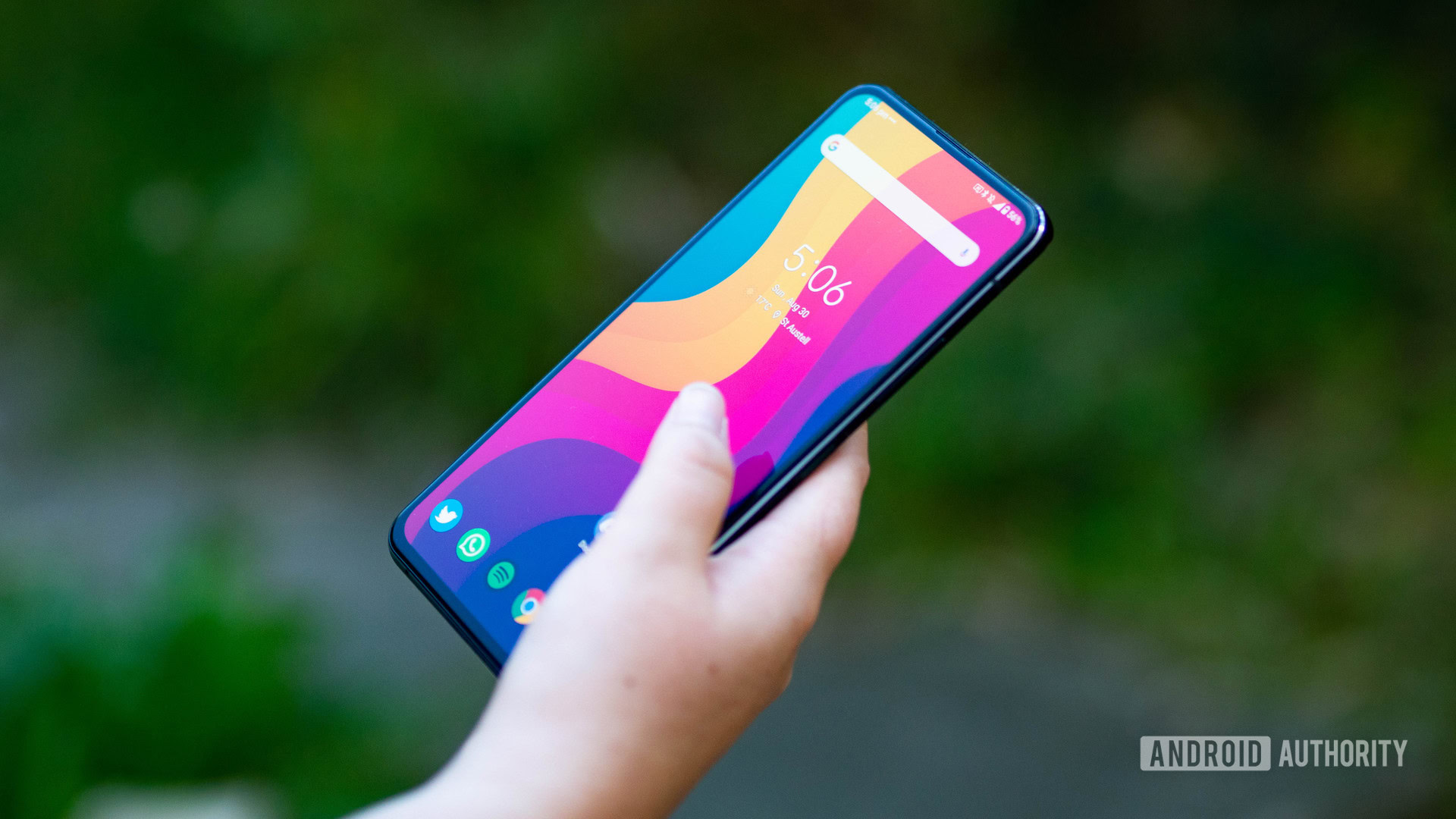
The ASUS Zenfone 7 series marks a move towards higher pricing, but the standard phone is still cheaper than base flagships from Samsung and Xiaomi. Fortunately, there are still quite a few options out there if you like the idea of a cheaper high-end phone, and most of these are all newer 2021 releases as well.
The POCO F3 is one of the better Zenfone 7 alternatives in this regard, starting at €349 in Europe. This makes it significantly cheaper than the base Zenfone 7 while offering much of the same hardware and features.
Along the same lines is the Xiaomi Mi 11 series. It also comes with a vanilla and Pro iteration, features flagship processors, and offers excellent battery life. Another notable alternative is the €600 (~$710) realme X50 Pro, the firm’s first 5G flagship. If you’re looking for devices available in the US, the OnePlus 9 series is a great option.
Also joining the crowd in this price range are the Pixel 5 and the Samsung Galaxy S20 FE. The Pixel 5 doesn’t have the same processing power behind it, but it is one of the best camera phones you can get in any price range. The Pixel 5a is also worth checking out. Then there’s the Galaxy S20 FE (Fan Edition), as the name implies, is great for Samsung fans. It tacks on a lot of extras the Zenfone 7 series misses out on, like wireless charging, reverse wireless charging, and water resistance.
If you want Samsung’s latest, the Galaxy S21 series is the way to go. While the Plus and Ultra are in a different price range, the regular Galaxy S21 is primed to compete against the likes of the Zenfone 7 Pro. A great camera and a faster processing package in the Snapdragon 888 is what you get with the new Samsung flagships.
The latest ASUS flagship, the Zenfone 8 series, is also worth checking out. It’s an incremental update at best, so if you already have the Zenfone 7 (particularly the Pro), you can hold off from upgrading for now. However, if you’re looking for a newer alternative, the latest ASUS smartphones are a good way to go.
Pricing and availability
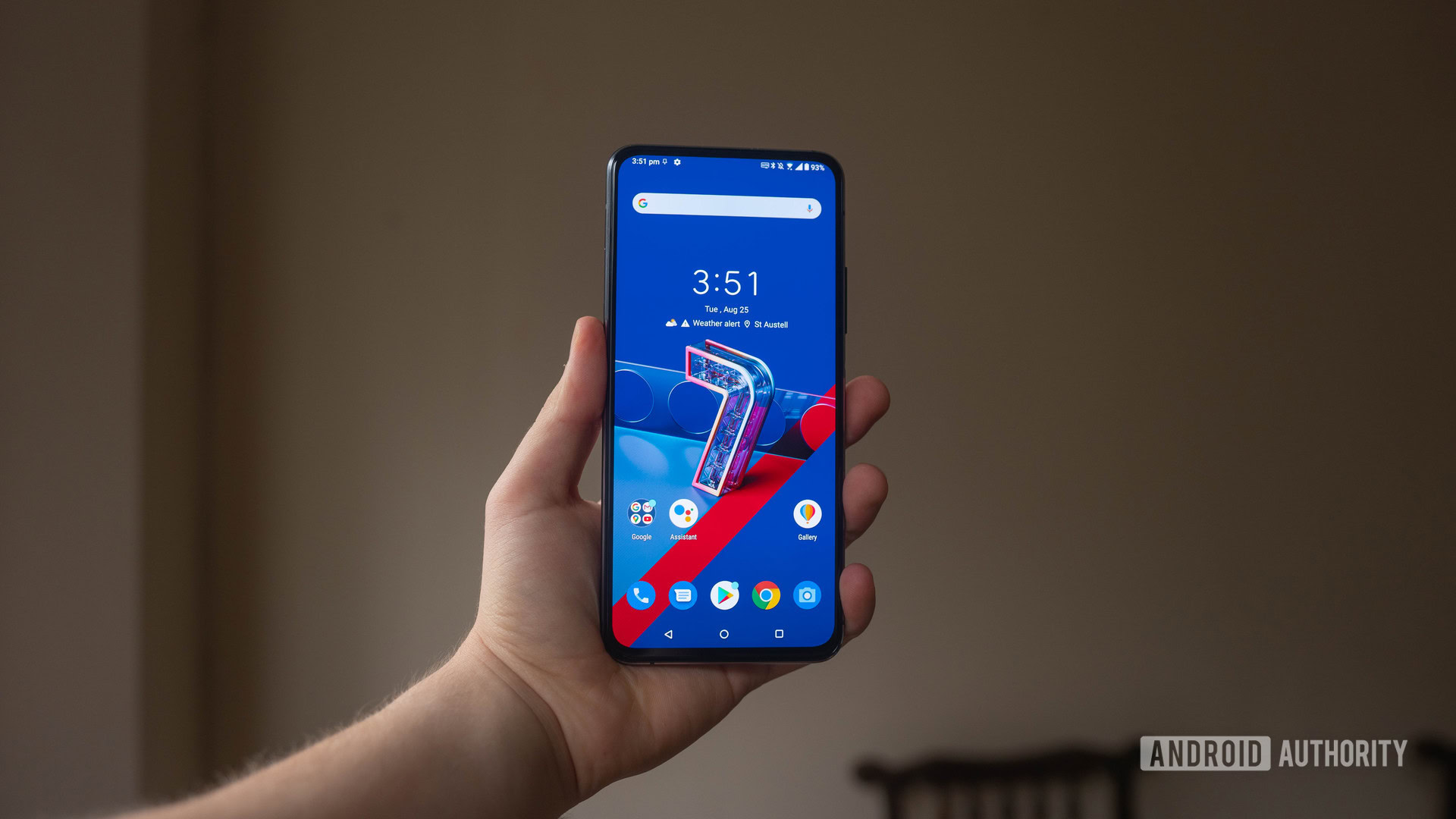
The vanilla phone starts at 21,999 New Taiwan dollars (~$750) for the sole 6GB/128GB option in its home market. Meanwhile, the Zenfone 7 Pro starts at 27,990 New Taiwan dollars (~$955) for the 8GB/256GB model.
European users have to pay €699 for the base model (8GB/128GB) of the Zenfone 7. The 8GB/256GB Zenfone 7 Pro retails for €799.
The Zenfone 7 hasn’t yet been released in the US, but you can get the international models on Amazon via the buttons below.
Top ASUS Zenfone 7 series questions and answers
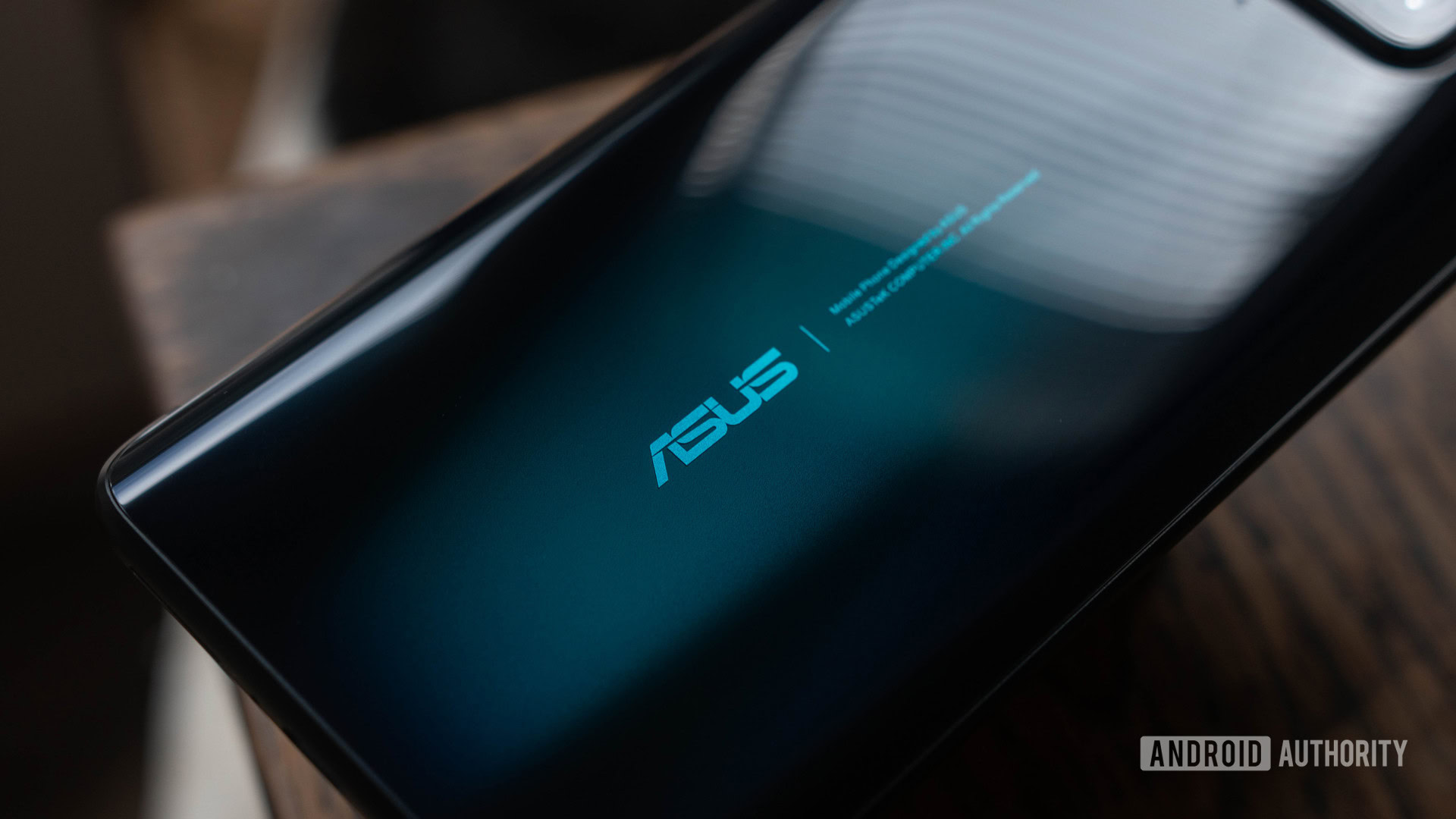
Q: Does the ASUS Zenfone 7 family support headphone jacks?
A: Unlike their predecessor, the Zenfone 7 and 7 Pro don’t support 3.5mm ports. So, USB-C/dongle or Bluetooth connections are the only options. ASUS says there wasn’t enough room for the port due to 5G requiring additional antennas.
Q: Do these new phones support wireless charging?
A: Unfortunately, the ASUS Zenfone 7 devices don’t pack wireless charging support. However, they do offer 30W wired charging capable of topping up your phone in 93 minutes. That’s far better than the Zenfone 6’s 18W charging that took two and a half hours.
Q: Do the ASUS Zenfone 7 devices pack microSD and/or dual-SIM slots?
A: Yes, both the Zenfone 7 and Zenfone 7 Pro actually offer triple slots. That means you’ve got two nano-SIM slots and one dedicated slot for microSD cards.
Q: What storage variants are these phones available in?
A: The standard Zenfone 7 is only available with 128GB of storage, while the Zenfone 7 Pro offers 256GB of storage.
Q: What happened to the Smart Key?
A: ASUS has ditched the separate Smart Key for shortcuts in favor of using the power button. The power button can also be programmed to launch certain apps/features with a double-tap or a long-press in addition to featuring a fingerprint scanner.
Q: Is the ASUS Zenfone 7 series water-resistant?
A: Unfortunately, the Zenfone 7 and 7 Pro lack a significant IP rating due to the flip camera setup.
Q: What’s in the box when you buy a Zenfone 7 or Zenfone 7 Pro?
A: You’ll get a rugged Active Case, a transparent case, a 30W USB-C charger, and a USB cable.